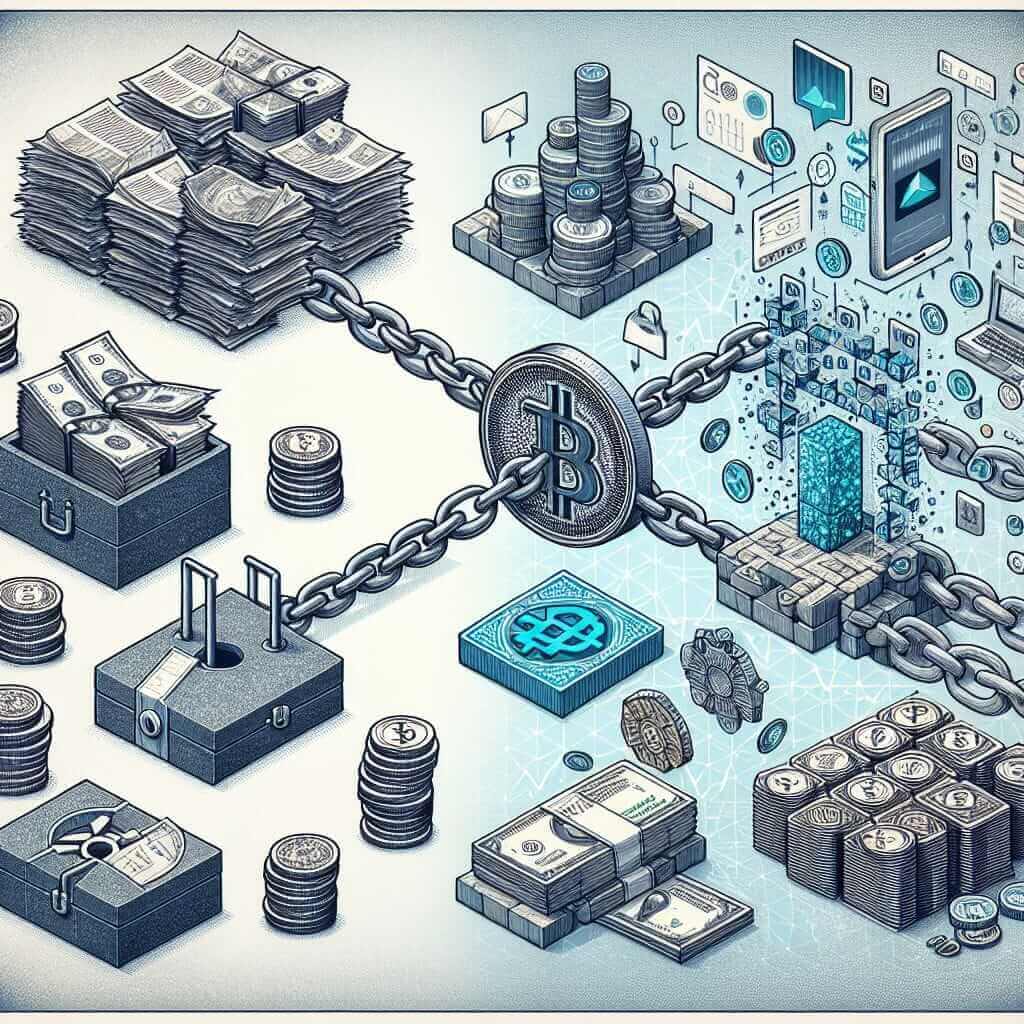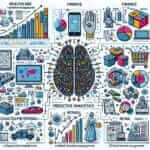The IELTS Reading test requires candidates to understand and interpret a variety of texts to answer questions accurately. The topic of “How is blockchain technology impacting financial transparency?” is very relevant due to the increasing importance of blockchain in today’s financial world. This topic, reflecting trends and innovations, has potential to appear in future IELTS tests. Historically, topics around technology and finance have appeared several times in IELTS exams, reflecting their ongoing significance.
Reading Passage
To help you prepare, we will provide a full IELTS Reading passage on “How is blockchain technology impacting financial transparency?” followed by various question types similar to those seen in the IELTS exam.
Reading Passage
How Blockchain Technology is Transforming Financial Transparency
In recent years, blockchain technology has emerged as a groundbreaking innovation with the potential to revolutionize financial systems. Originally developed as the underlying structure for cryptocurrencies such as Bitcoin, its implications extend far beyond digital currencies. One of the most crucial impacts of blockchain technology is its ability to enhance financial transparency.
Firstly, blockchain’s decentralized nature plays a pivotal role in promoting transparency. Unlike traditional financial systems that rely on centralized databases, blockchain operates on a decentralized ledger. This means that all participants have access to the same information simultaneously. Consequently, this structure significantly reduces the chances of fraudulent activities, as it becomes nearly impossible to alter transaction records without consensus from the network.
Secondly, blockchain ensures an immutable record of transactions. Once a transaction is recorded on the blockchain, it cannot be altered or erased. This immutability is secured through cryptographic hashing, which ensures data integrity and enhances trust among participants. This feature is particularly beneficial for auditing purposes, as it guarantees the accuracy and reliability of financial records.
Moreover, blockchain’s transparency extends to cross-border transactions. Traditional cross-border payments often involve multiple intermediaries, leading to increased costs and delays. Blockchain simplifies this process by enabling direct peer-to-peer transactions, thus eliminating the need for intermediaries and reducing the potential for corruption and bureaucratic red tape.
In addition, blockchain technology utilizes smart contracts – self-executing contracts with the terms of the agreement directly written into code. These contracts automatically execute transactions when predefined conditions are met, thereby minimizing the need for manual intervention and enhancing transparency. This automation also reduces the risk of human error and ensures that all parties adhere to the agreed terms.
 Blockchain enhancing financial transparency
Blockchain enhancing financial transparency
Finally, blockchain’s potential for financial transparency is particularly significant in developing countries where corruption is prevalent. By providing a transparent and tamper-proof record of transactions, blockchain can help combat corruption, ensure fair distribution of resources, and foster trust in financial systems.
In summary, blockchain technology offers considerable promise in enhancing financial transparency. Its decentralized ledger system, immutability, and ability to facilitate direct transactions and smart contracts contribute to a more transparent and trustworthy financial environment. As blockchain continues to evolve, its influence on global financial transparency is expected to grow.
Questions
1. Multiple Choice
-
According to the passage, what is one significant feature of blockchain?
- A. Centralized data control
- B. Immutability of transactions
- C. High costs of transactions
- D. Manual recording of data
-
How does blockchain aid in transparency for cross-border transactions?
- A. By increasing the number of intermediaries
- B. By simplifying the process and reducing delays
- C. By enhancing governmental control over transactions
- D. By introducing more bureaucratic steps
2. True/False/Not Given
-
Blockchain technology was initially developed to support traditional banking systems.
- True
- False
- Not Given
-
Smart contracts require manual intervention to execute transactions.
- True
- False
- Not Given
3. Matching Headings
-
Choose the correct heading for each paragraph:
- Paragraph 2: __
- Paragraph 3: __
- Paragraph 4: __
- Paragraph 5: __
Heading Options:
- A. Role of Decentralization
- B. Benefits for Developing Countries
- C. Cost Implications
- D. Immutability and Security
- E. Smart Contracts
Answer Key
Multiple Choice
- B. Immutability of transactions
- B. By simplifying the process and reducing delays
True/False/Not Given
- False (Blockchain was developed for cryptocurrencies, not traditional banking systems initially)
- False (Smart contracts are self-executing and do not require manual intervention)
Matching Headings
-
- Paragraph 2: A. Role of Decentralization
- Paragraph 3: D. Immutability and Security
- Paragraph 4: B. Benefits for Developing Countries
- Paragraph 5: E. Smart Contracts
Common Mistakes
- Misunderstanding True/False/Not Given questions – Ensure you grasp the evidence in the text rather than making assumptions.
- Errors in interpreting vocabulary – Always look for context clues to understand the meaning of unfamiliar words.
Vocabulary
- Decentralized (adjective) – /ˌdiːsɛntrəˈlaɪzd/ – controlled by several local offices or authorities rather than one single one.
- Immutable (adjective) – /ɪˈmjuːtəbl/ – unchanging over time, or unable to be changed.
- Cryptographic (adjective) – /krɪptəˈɡræfɪk/ – related to the practice of encrypting and decrypting information.
- Intermediary (noun) – /ˌɪntərˈmidiˌɛri/ – a person who acts as a link between people in order to try to bring about an agreement or reconciliation.
Grammar
- Present Continuous Tense – Used to describe ongoing actions (e.g., “Blockchain technology is transforming financial systems”).
- Passive Voice – Used to emphasize the action rather than the doer (e.g., “The record cannot be altered”).
Tips for High IELTS Reading Scores
- Practice regularly with different types of reading materials.
- Develop skimming and scanning techniques for quick comprehension.
- Use context clues to deduce meanings of new words.
- Time yourself to improve speed and accuracy.
- Review and analyze your mistakes to avoid them in the future.


